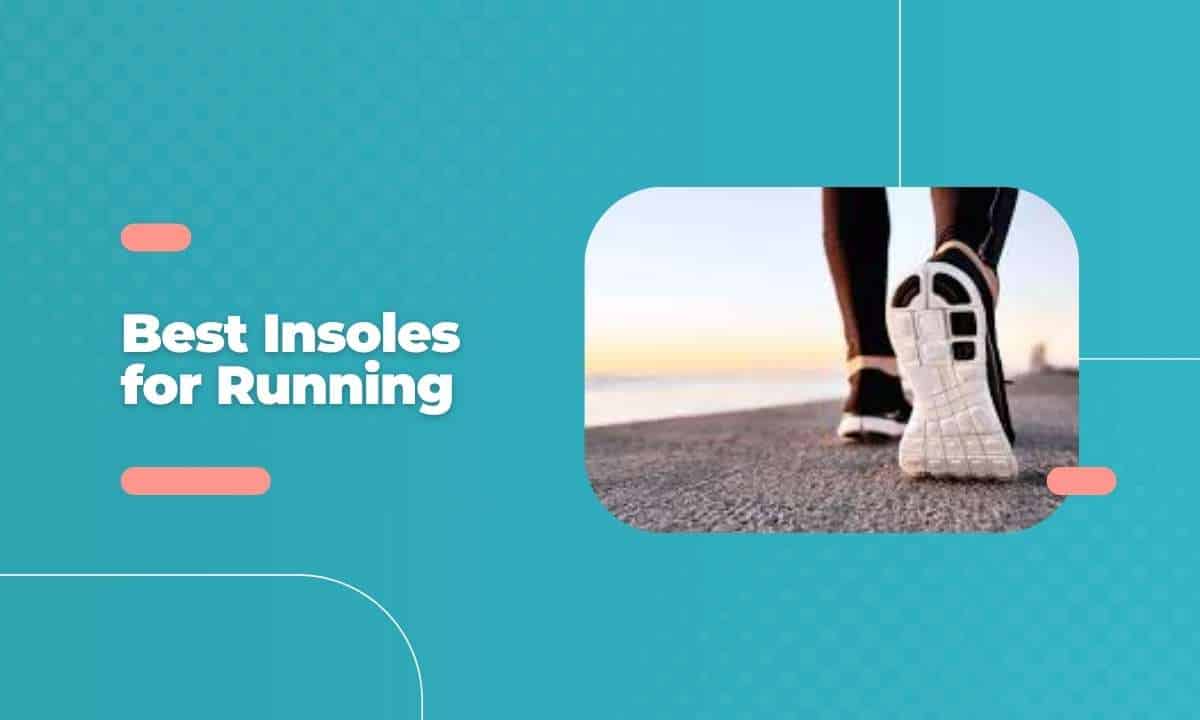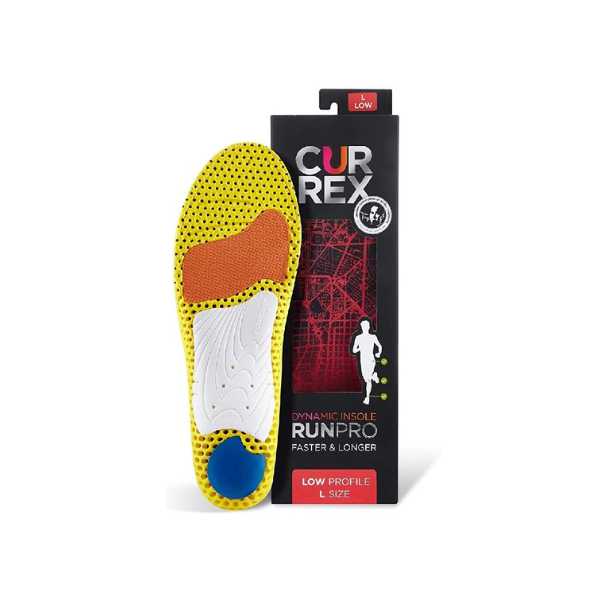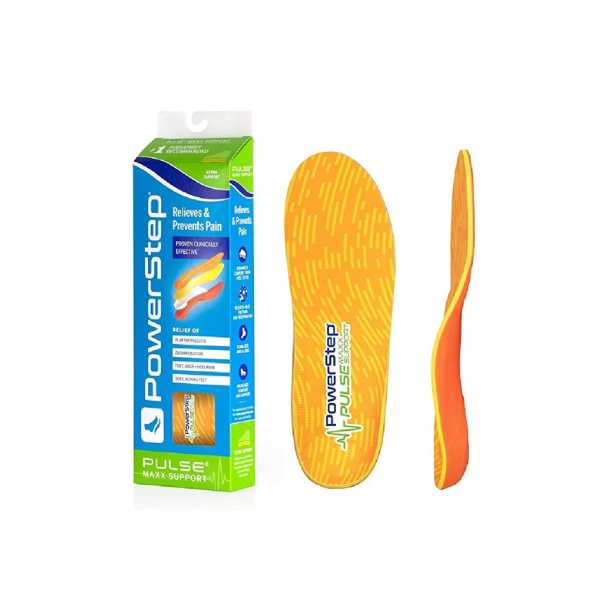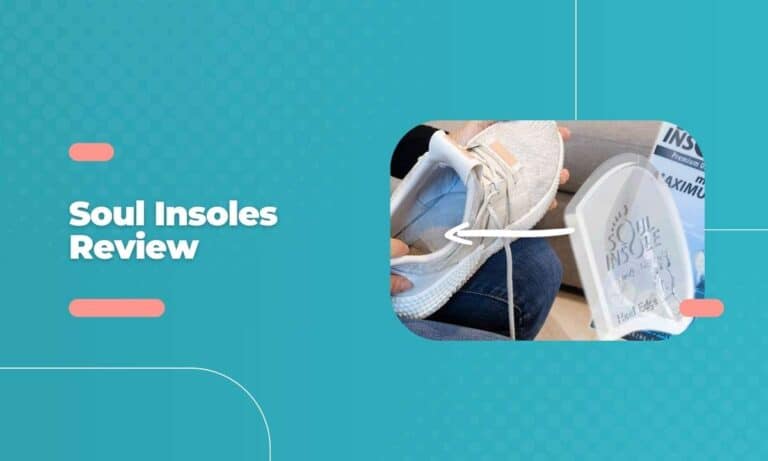Feet First: The Ultimate Guide to Choosing the Best Insoles for Running in 2024

As a seasoned runner and insoles enthusiast, I’ve seen the transformative power of insoles firsthand.
With a balanced and unbiased approach, I’ll share the science behind running insoles, exploring their impact on biomechanics, pain relief, and overall running performance.
On top of that, I’ll unravel the complexities of insole selection, providing expert insights into choosing the best insoles for running.
Should Runners Use Insoles?
Running is a perfect way to stay fit and healthy, but it can also cause a lot of strain on your feet. This can lead to various foot issues, such as plantar fasciitis, shin splints, and heel pain. Insoles can help to reduce foot pain and improve running performance by providing additional support and cushioning.
What are the Best Insoles for Running?
Here are the top insoles for running to consider.
1 Superfeet RUN Comfort

Key Features:
- Excellent arch support and heel cushioning.
- It fits various shoe sizes without trimming.
- Effective blister prevention during long walks.
- Suitable for those with foot conditions.
- Comfortable and supportive for athletic shoes.
User Experience:
- Appreciate for arch support and cushioning.
- There is no need for trimming versatile sizing.
- Effective blister prevention.
- Beneficial for individuals with foot conditions.
- Comfortable and supportive in athletic shoes.
What We Like:
- Firm arch support and heel cushioning.
- Versatile sizing.
- Effective blister prevention.
- Suitable for specific foot conditions.
- Comfort and support in athletic shoes.
What We Dislike:
- Thicker than some insoles, may need to fit better in tight shoes.
- Some users found them uncomfortable and lacking cushioning.
- Not ideal for those seeking reduced shoe volume.
2 CURREX RunPRO Insole

Key Features:
- Exceptional support for running and casual shoes.
- Reduced impact on knees and back for daily runners.
- Customizable arch height options.
- Effective for individuals with high arches.
- Versatile usage in different shoe types.
User Experience:
- Appreciate your support and shock reduction.
- Some users encountered sizing issues and found them relatively expensive.
- Limited cushioning compared to alternatives.
What We Like:
- Outstanding support for various shoe types.
- Reduced impact for daily runners.
- Customizable arch height.
- Effective for high arches.
- Versatile use.
What We Dislike:
- Sizing issues with more oversized sneakers.
- Higher price point compared to alternatives.
- Limited cushioning for those seeking more padding.
3 Powerstep PULSE Maxx Insoles

Key Features:
- Perfect fit for various types of shoes.
- Recommended by podiatrists as a cost-effective alternative.
- Ideal for users with arch support issues who spend extended periods on their feet.
- Effective in reducing toe pain during running and walking.
- Offers a variety of support options for different foot needs.
User Experience:
- Appreciate for versatility and support.
- Recommended by podiatrists as a cost-effective solution.
- Effective for users with arch support issues and pain relief during activities.
- Some durability issues were reported, with one pair falling apart after 45 days of regular use.
- Sizing discrepancies can be frustrating for international customers.
What We Like:
- Versatile fit for various shoe types.
- Recommended by podiatrists as a cost-effective alternative.
- Effective for arch support and pain reduction.
- Variety of support options for different foot needs.
What We Dislike:
- Durability issues reported.
- Sizing discrepancies.
- Some users find similar support in lower-cost running shoes.
4 Spenco PolySorb Cross Trainer Insoles

Key Features:
- Affordable and effective for comfort and cushioning.
- Easy installation for essential, flat shoes.
- Provides support for conditions like plantar fasciitis and aids in recovery from foot injuries.
- Positive feedback from military personnel in basic training.
User Experience:
- Found to be affordable and effective, especially for activities like cheerleading.
- Easy installation and practical support for various foot conditions.
- Some users experienced issues like Morton’s neuroma and knee bursitis.
- Uplifted heels may not suit everyone and could cause forefoot issues over time.
- Larger, cushioned insoles might only sometimes provide the desired support.
What We Like:
- Affordability and effectiveness for comfort and support.
- Versatility in usage, including activities like cheerleading.
- Positive feedback from those with foot injuries and plantar fasciitis.
What We Dislike:
- Potential issues like Morton’s neuroma and knee bursitis.
- Uplifted heels may not be suitable for everyone.
- Larger, cushioned insoles might only sometimes provide the desired support.
5 EasyFeet Plantar Fasciitis Arch Support Insoles

Key Features:
- Excellent arch support, especially for those with plantar fasciitis.
- Effective cushioning for heels, enhancing shoe and boot comfort.
- Ideal for long hours on your feet, making work boots comfortable.
- Responsive customer service with quick refunds for defects.
- Proven relief from plantar fasciitis pain during running.
User Experience:
- Appreciated for exceptional arch support and heel cushioning.
- Some individuals experienced discomfort, lower back stiffness, and squeaking during walking.
- Quality issues reported, such as layers coming unglued and falling apart.
What We Like:
- Exceptional arch support for plantar fasciitis.
- Improved comfort for shoes and work boots during extended wear.
- Responsive customer service and refund policy.
What We Dislike:
- Less arch support compared to more affordable alternatives.
- Potential comfort issues, including discomfort and squeaking.
- Quality concerns with layers separating and falling apart.
How Do Insoles Help Your Running?
Insoles can help your running in several ways:
- Provide arch support: This helps stabilize your feet and prevent excessive pronation, leading to pain and injury.
- Cushion your feet: This helps to absorb shock and reduce impact forces, which can help to avoid fatigue and injury.
- Improve fit: Insoles can help fill out your shoes and improve fit, which can help prevent blisters and other problems.
How Do You Know If You Need an Insole for Running?
If you are experiencing any of the following, you may need insoles for running:
- Foot pain: This is the most common sign that you need insoles. Pain can be located anywhere on your foot, but it is most common in the heel, arch, and forefoot.
- Pronation: The inward rolling of your foot during walking or running may lead to discomfort and potential injuries.
- Shin splints: Shin splints are a pain in the shins caused by overuse. Insoles can help to reduce shin splints by providing additional support and cushioning.
What to Look for in Insoles as a Runner
When choosing insoles for running, there are a few things you should look for:
- Pain Relief: Insoles can provide significant pain relief for runners. They can help alleviate pain from various foot issues, such as plantar fasciitis, shin splints, and heel pain.
- Support: Insoles can provide additional support for your feet, which can help to enhance your running performance and prevent injuries.
- Cushioning: Insoles can provide extra cushioning for your feet, which can help to absorb shock and reduce impact forces. This can help to avoid fatigue and injury.
- Fit: Insoles should fit snugly in your shoes. They should not be too tight or too loose. A good fit will help to maximize the benefits of the insoles.
Final Thoughts
All right, we’ve covered much about running insoles today.
Remember, these little inserts can make a big difference in your running journey. They’ll give you the comfort and support to keep pushing forward.
So, as you lace up your running shoes, remember the mentioned best insoles for running we’ve discussed. They’re like your secret weapon for happy feet on the track.
FAQs
Do runners need insoles?
Insoles help runners with foot pain, overpronation, or conditions by providing arch support, cushioning, and stability for improved performance.
What types of insoles are there for running?
Running insoles come in full-length, ¾ length, and heel cup variations with different levels of support and flexibility.
Key features for running insoles?
Look for appropriate arch support, sufficient cushioning, and a snug fit in your shoes.
How do you determine the right insole type?
For personalised recommendations, consult a podiatrist or running specialist to assess your foot type, running style, and any foot pain.
Choosing the right size of insole?
Select the proper size based on your shoe size using sizing guides on the packaging. Trim insoles if needed to fit your shoes.
How often do you replace running insoles?
Replace insoles every 300-500 miles or when signs of wear, like thinning or cracking, appear.
Are you cleaning running insoles?
Hand wash with warm, soapy moisture and air dry completely before putting them back in your shoes.
Can I wear insoles in all my shoes?
Insoles are designed for running shoes and may not fit appropriately in other shoes.
Other tips to prevent foot pain while running?
Wear the right shoes, warm up and cool down properly, and stretch regularly, in addition to using insoles.






